Genshin Impact Lauma Analysis: Evermoon's Sacrament SoLaumang
Lauma has appeared twice before, in the Genshin Impact Nod-Krai teaser short "Through the Silent Frostbound Night" and the Song of the Welkin Moon teaser PV. Presumably, everyone is already familiar with this saintly priestess of the Frostmoon Scions. Strictly speaking, the newly released character artwork does not provide much new information, so here we will mainly synthesize previously known details to discuss this character.
1. Genshin Impact Lauma: Cultural Background of the Name
First, a brief examination of the cultural background of the name "Lauma." The name is derived from the forest spirit "Lauma" in Eastern Baltic mythology (referring to the ancient mythological system believed by ethnic groups in present-day Lithuania, Latvia, Estonia, and surrounding regions).

Legend says the fairy Lauma was a guardian deity of orphans. Originally a celestial being, she sympathized with human suffering and descended to the mortal world, choosing to share the fate of humans. In Lithuanian mythology, Lauma initially often appeared in animal forms, later gradually developing anthropomorphic appearances; in other legends, Lauma fell in love with the moon deity, which perfectly aligns with Lauma's identity as the Chantress of the Frostmoon in the game.
2. Genshin Impact Lauma-"Frostmoon Scions"
Let's examine the group Lauma belongs to-the "Frostmoon Scions", one of the core factions in the Nod-Krai region.
According to existing intelligence, the Frostmoon Scions are descendants of the ancient nation "Golden City" Hyperborea, which once rebelled against the Heavenly Principles under the leadership of the Archangel and the Stellar Traveler. After their civilization was struck down by Celestia and faced destruction, the survivors of the Golden City abandoned all traces of their past, choosing to live in seclusion among the mountains for millennia. The only thing they never discarded was their faith in the "Moon God." The unwavering devotion of the Frostmoon Scions can be deeply felt through the introduction in this artwork.

The Frostmoon Scions have passed down ancient secret rites through generations. They wield a mysterious lunar power known as "magic," distinct from elemental forces. Through rituals, the Chantress of the Frostmoon can summon the moon's guidance and miracles for her people. In truth, Lauma does not channel elemental power through the "Vision" we know but instead wields her abilities via an artifact called the "Moon Wheel."
The Moon Wheel first appeared in the prologue story "Song of the Welkin Moon" in Version 5.8, playing an extremely pivotal role as Ineffa's core. During the decisive battle, the Eleventh of the Thirteen Sovereign Lords, "Mirror of the Dawning Morn," referred to it as "an artifact created by those three deities and usurpers who betrayed us." The Eighth, "Priestess of Floral Candles and Skyborne Feathers," conducted a comparative analysis between the Moon Wheel sample obtained from Nephataiheim and the Vision sample extracted from the remnants of the suppressed human rebels in Natlan, delving into the operational principles of both. Parts of the related experimental reports were recorded in Ineffa's character profile:

The location "Niflheim" mentioned here is speculated to be the dragon race's designation for the Nod-Krai region. Its prototype is the "Mist-home" Niflheim in Norse mythology, a perpetually fog-shrouded and frigid area. Sometimes Niflheim is also called "Helheim," meaning "Home of Hel," and is said to be ruled by Hel, daughter of Loki-a land of the dead where only souls of the deceased may enter; in other words, it is the "underworld" in Norse mythology.

Geographically, legend states Niflheim lies at the northern end of the "Ginnungagap" chasm, facing the "Flameland" Muspelheim across the divide. This precisely corresponds to the game's geographical layout where Nod-Krai faces the "Flameland" Natlan across the sea.
As for the Moon Wheel, in simple terms, it is a type of "communicator" bestowed by the Trinity of Moon Goddesses upon their human followers. It is used as a ritual instrument by the cults of Nephataiheim. The Moon Wheel can bear powers more primordial and pure than elemental energy. Its operational principle resembles that of the Vision: both are driven using the soul as material, harnessing elemental forces through the anchoring effect of desire (the dragon race's research on desire and the psyche was first mentioned when Ixlel revealed the glorious technological achievements of the ancient dragon civilization to Och-Kan)

The process by which the Heavenly Principles transformed phlogiston into modern elemental energy was likely achieved by adding a certain "regulatory factor," and this factor is most probably the "Human Realm" force among the three realm forces-a power built upon human will and soul. This corresponds to the explanation that Visions are driven using the soul as material through the anchoring effect of desire. Precisely because the Human Realm force is a new power brought by Phanes after colonizing Teyvat, the dragon race referred to modern elemental energy as "elemental force polluted by usurpers" in their accounts.
Considering that in the ancient sacred mountain story, Kukulkan revealed the essence of phlogiston as "computronium"-atoms capable of recording information, a universal substrate that can simulate anything when organized and controlled with appropriate methods (understood as a form of nanomachine)-and noting that the Moon Wheel shares a similar operational principle to the Vision, it can be inferred that the Moon Wheel uses a method akin to the Human Realm force to issue organizational commands to phlogiston, producing effective regulation. This special force is likely the scarcely mentioned "Lunar Torque," which the Fatui are researching with full effort by establishing a vast design bureau in Nod-Krai. \n

3. Genshin Impact Lauma: Hiisi Island
After discussing the mysteries of the Moon Wheel, let us turn back to the Frostmoon Scions. Through previous faction previews, we already know this cult mainly gathers on "Hiisi Island," and their peculiar statues can be seen throughout Nod-Krai.
The term "Hiisi" in "Hiisi Island" originates from Finnish mythology. Initially meaning "sacred place," it later referred to various mythological entities, such as forest spirits, carrying sacredness and reverence for nature. With the spread of Christianity in Finland, the concept of Hiisi in primitive beliefs was stigmatized, gradually transforming into purely evil spirits, described as pagan trolls haunting wilderness mountains.

The most distinctive feature of the Frostmoon Scions' appearance is the antler headdresses they wear (though it cannot be ruled out that they actually grow antlers). People in the cult also live daily with spirit deer, regarding them as sacred animals. The short film "Through the Silent Frostbound Night" shows spirit deer acting as messengers delivering messages and also depicts Lauma merging with a spirit deer, riding in a semi-cervitaur spectral form. This may be a special ability passed down through generations of Chantresses of the Frostmoon. In fact, Lauma's constellation is named "Cerva Nivea" (Latin etymology, literally meaning "snow-white deer").

The reason for choosing deer as the representative animal of the Frostmoon Scions is that deer symbolize "vitality" in legends. The design prototype of the Frostmoon Scions references the "Druidism" faith in Celtic culture, which is renowned for its worship of natural and life forces.

In Druidism, celestial bodies-namely the sun, moon, and stars-are also regarded as deities, with the moon seen as the source of spirituality, and worshipping it believed to bring spiritual growth. Druidism also holds a significant sacred ritual of harvesting mistletoe, considered a panacea. The timing of this ritual is tied to the lunar phases: priests select days of the full moon or new moon, or the sixth night of the month. The golden sickle used in the ceremony mimics the shape of a crescent moon, symbolizing the "Supreme Moon that embraces the seeds of all things" in Druidism.
These cultural backgrounds directly correspond to the Moon God worship of the Frostmoon Scions, as reflected in their rituals. The previous prologue PV, "Song of the Welkin Moon," showcased a beautiful and sacred rite praying to the Frostmoon. As described in today's character preview: "Lauma stepped out from the tree shadows into the moonlight, and the congregation bowed to her luminous antler crown and silver-blooded totems; thus she became the proxy of the vanished deity."


For the Frostmoon Scions, Lauma is the Moon God's emissary on earth, holding an incomparably exalted status within the cult. Undoubtedly, Lauma herself lives up to this noble identity. Through her virtuous character, wisdom in handling affairs, and profound influence, she has earned widespread reverence even in the chaotic and diverse Nod-Krai.
4. Genshin Impact Lauma: Hyperborea,
the "Golden City"
The name "Hyperborea" was first mentioned in Version 4.0's Battle Pass weapon "Ballad of the Fjords," described as a great ancient civilization submerged deep beneath the icy sea, known as the "Land of White Stone and Gold." The tale of "the young hero Ajax discovering this ancient kingdom" is a legend widely circulated across the northern continent.
Additionally, according to the Lumidouce Bell's description in the Archive's Local Specialties section, the famous Fontaine playwright Coppelius drew inspiration from this legendary lost northern realm to create his renowned play The Golden Hyperborea, expressing the pursuit of eternal beauty and eternal love. It was through this work that the imagery of Hyperborea became famous in Fontaine.
Later, the concept of Hyperborea reappeared in the Narzissenkreuz questline, where children of the Narzissenkreuz Institute used it as one of the names for the "world's center" in their fantasy adventure games. In Rene's "Human Soul Evolution" theory, later established for the Narzissenkreuz Ordo, Hyperborea is referenced as the first epoch in the four cycles, symbolizing "a world frozen in ice and the lost paradise."
In the background story of the important artifact "Finale of the Deep Galleries" implemented in Version 5.5, the history of Hyperborea, the "Golden City," is officially revealed. The content can be summarized as follows:

Long ago, an alien traveler from a highly advanced civilization, who had once made a pact with Nibelung, returned to Teyvat-now dominated by Phanes. (Details of this traveler's pact with Nibelung are covered in Section One of this article; it is highly suspected this traveler was Teyvat's "Third Descender.") Confused by the world's unrecognizable changes and the unexplained absence of his old friend, the traveler violated the laws of his kind and chose to probe the false sky's world, inhabiting the body of an unnamed youth in the northern Golden City to investigate.
At that time, the Golden City was embroiled in fierce disputes. People blamed one another for provoking the envoys by questioning the intellect of evolution, accusing each other of the sin of usurpation, and demanding the selection of a scapegoat to appease the sky's wrath. During the sacrificial era, human civilizations could directly hear the voice of the heavens, and angels walked the earth delivering divine revelations. However, "seeking truth" was deemed the gravest taboo; humans were forbidden to question the sky's authority, let alone attempt to ascend to the gods' domain. As the saying went, "Doubt of 'eternity' is impermissible; the mire's probing of the sky is unforgivable."
Witnessing this scene, the traveler inhabiting the youth revealed himself and refuted the priests' claim that "mortals are guilty." In the council hall, silenced by these "blasphemous" words, the high priest granted the youth's request to seek answers from the angels.
Thus, the traveler entered the deepest part of the Golden City to meet the first angel. He directly inquired about the world's most forbidden origins. As the archangel trembled at this unexpected question from the mortal, the traveler unreservedly confessed his true origins. Stirred by an unprecedented emotion, the archangel revealed the secrets of the sky to the traveler.
Ultimately, the traveler moved the first angel with love, freeing her thoughts from the shackles of the Primordial Law. She understood the absurdity of the sky's rules and the meaning of love and freedom, solidifying her resolve as a noble archangel. The star-bound traveler and the archangel, united in love, raised the banner of rebellion against the Heavenly Principles in the northern Golden City, vowing to liberate all earthly beings and guide them back to the stars.
The then-surviving Trinity of Moon Goddesses watched the archangel's betrayal through the clouds but did not report it to the Heavenly Principles. Instead, they secretly nurtured an even more audacious wish. This is why, as mentioned earlier, though the Moon Goddesses offered no resistance during Phanes' invasion, they held no true loyalty to this new master.
Legend says the people of the Golden City obtained the power of creation-originally governed by the heavens-from the archangel who rebelled against the Heavenly Principles. The city's craftsmen used "remains of giant beasts" (suspected to be dragon bones) as a foundation, weaving "frostmoon light" into flawless flesh to create countless spirits. They hoped to one day craft perfect life, which likely marked the origin of the Golden City's moon worship. An intriguing conjecture suggests that among the Golden City's descendants today, some may bear spirit-blooded humans, perhaps explaining the Frostmoon priests' beautiful antlers and moon-silver blood.
Beyond the records in the artifact "Finale of the Deep Galleries," the background story of the newly implemented weapon "Azurelight" in Version 5.7 also recounts the declaration of resistance made by the first angel who raised the banner of rebellion against the Heavenly Principles. It not only envisions the future but also prophesies the fates of several angelic remnants we already know well, including the "Goddess of Flowers" Nabu Malikata and the "Golden Bee" Sybilla.

And we have long known the tragic outcome of this resistance. As azure nails descended from the sky, the Golden City was obliterated overnight. The archangel who betrayed was stripped of name and form, and the entire angel race was cursed by the heavens with the edict "Thou shalt not love humans."

Later, as described in Section One of this article, Teyvat's former master Nibelung returned from the cosmos to wage a war of vengeance against the usurper of the sky. Though the Heavenly Principles ultimately erased the Black-Winged King at great cost, its own functions suffered severe damage. It could no longer suppress the world's inherent order with absolute authority, and the sacrificial era under the divine plan began to decline.
During the year of the cataclysm, though the entire world was engulfed in cataclysmic upheaval, the war also tore the "False Sky"-the unknowable veil separating the world from the cosmos. This allowed some human civilizations to glimpse the truth of the world and nurture audacious desires. To neutralize the dark poison (Abyss) seeping into the earth, the Heavenly Principles dropped nails to mend the land; simultaneously, they destroyed certain human nations that dared to harbor ambitions of breaking their shackles.

When the Heavenly Principles first created the angel race and engraved the primal command "Love all earthly beings with all thy heart, soul, and strength" into their souls, it likely never imagined its own creations would one day stand against it for the sake of humans. The angels' sympathy and support for humans enraged the Heavenly Principles, leading the entire race to suffer the cruel punishment of being thoroughly deposed, forever forbidden to gaze upon the high heavens again.
The once glorious and noble race thus began their irreversible decline. Burdened by the curse, their forms and minds gradually eroded until they became the hollow shells now known as "Seelies," seen across the continent. Even so, they still follow their instinct to love humans, offering small guidance. Ages later, in the gilded desert, the Flower Goddess-a remnant of the angels-told her companion, the Crimson Lord who also walked the path of defying the Heavenly Principles, the sorrowful history of her race.
After understanding the background of Hyperborea and revisiting the foreshadowing mentioned above, you will find all clues are interconnected. It is entirely reasonable that Master Rene chose Hyperborea as the symbol of the "Lost Paradise."
Additionally, one point deserves special mention: the weapon lore of "Azurelight," which records the declaration of the Golden City's archangel, inevitably evokes the background story of the weapon "Polar Star." Revisiting that "Fatui Enlistment Oath" text reveals striking similarities in content and phrasing to Azurelight's lore (most notably in the third section and concluding remarks). Readers are encouraged to compare them section by section.

Considering the Golden City lies within the territory of Snezhnaya, it is plausible that the current Tsaritsa raising the banner of rebellion against the Heavenly Principles shares some connection with the archangel who once rebelled. At the very least, it indicates that Snezhnaya's current pursuit of defying the Heavenly Principles' order and creating a new world carries a historical lineage from the ancient Golden City, continuing a past revolution.
However, historical connections do not alter the present reality. Now, amid the struggle to seize and protect the Moon God's power, increasingly fierce conflicts erupt between the Fatui and the Frostmoon Scions...
Regarding Lauma and the Frostmoon Scions, this is all the information we can discuss for now. More details must await the release of the characters and versions-truly something to look forward to! Of course, don't forget to keep following our articles and Genshin Impact merchandise on our site!













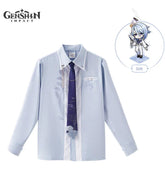

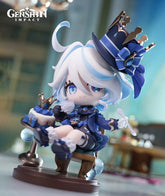
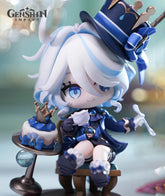
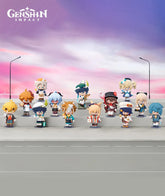
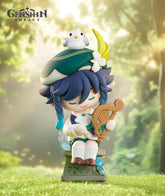
![[Official Merchandise] Genshin Impact Mondstadt Character Battlefield Hero Blind Box Figurine](http://genshinfans.com/cdn/shop/files/ZT01_cfa3cbdb-174c-465a-8c55-78df09defee6_165x.jpg?v=1691491218)
![[Official Merchandise] Genshin Impact Mondstadt Character Battlefield Hero Blind Box Figurine](http://genshinfans.com/cdn/shop/files/ZT02_bdd276a3-7703-4aaf-af27-2eda9711f581_165x.jpg?v=1691491218)
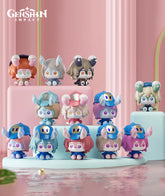
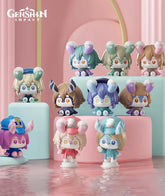

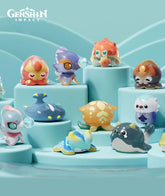
![[Official Merchandise] Slime Series:Mini Slime Blind Bag and Storage Jar](http://genshinfans.com/cdn/shop/files/01_a6da68cd-a9c6-4d42-83d4-47cf6da4cea2_165x.jpg?v=1697681811)
![[Official Merchandise] Slime Series:Mini Slime Blind Bag and Storage Jar](http://genshinfans.com/cdn/shop/files/02_01ef4aa2-dc28-4012-815a-a5785e4059f3_165x.jpg?v=1697681811)
![[Official Merchandise] Genshin Impact Liyue Character Battlefield Hero Blind Box Figurine](http://genshinfans.com/cdn/shop/files/ZT01_44c14e6c-4566-443e-8bda-8f19334a0674_165x.jpg?v=1691373657)
![[Official Merchandise] Genshin Impact Liyue Character Battlefield Hero Blind Box Figurine](http://genshinfans.com/cdn/shop/files/ZT02_6e32a927-d37e-48e7-b71c-83f70f6b664e_165x.jpg?v=1691373656)
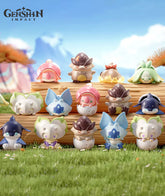
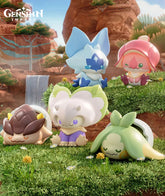


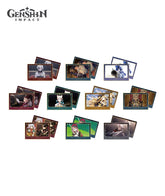

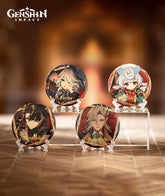

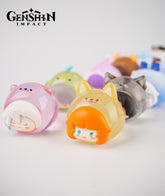
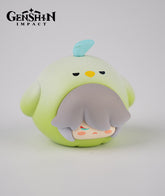
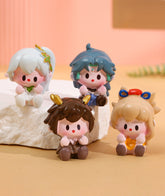

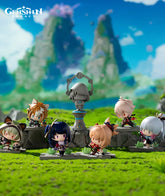

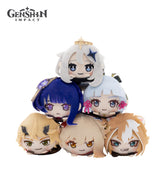
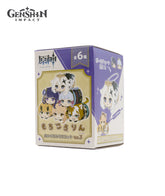
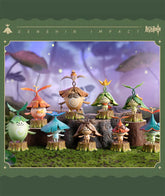
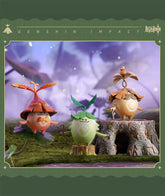
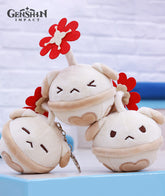
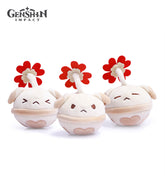
![[Official Merchandise] Genshin Impact Character Mamekororin Plushie Blind Box](http://genshinfans.com/cdn/shop/products/single-blind-box_165x.jpg?v=1694167275)
![[Official Merchandise] Genshin Impact Character Mamekororin Plushie Blind Box](http://genshinfans.com/cdn/shop/files/zt02_ac1d0b31-7251-447b-9551-bb14011131f5_165x.jpg?v=1694166613)
![[Official Merchandise] Genshin Impact Paimon Food Theme Blind Box Figure](http://genshinfans.com/cdn/shop/files/ZT01_c315a88f-d9cd-40a2-b735-2c4fe741b214_165x.jpg?v=1691667636)
![[Official Merchandise] Genshin Impact Paimon Food Theme Blind Box Figure](http://genshinfans.com/cdn/shop/files/ZT02_fc9f6831-b5a7-4f14-be47-dbaa3efa715b_165x.jpg?v=1691667635)